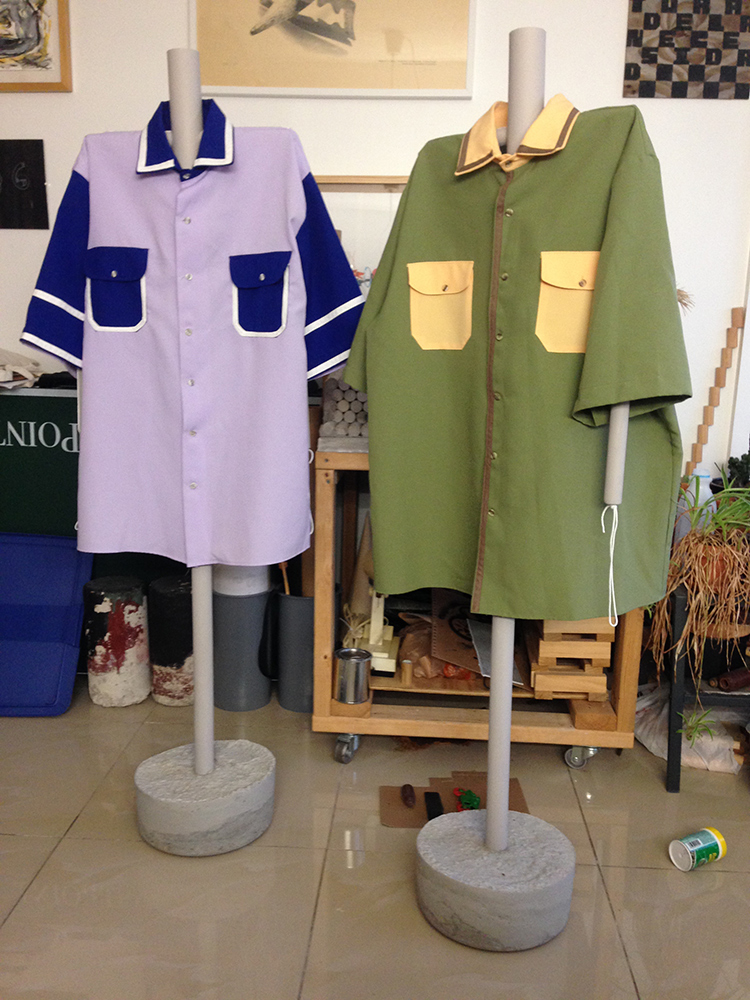ALTERED STATES OF CONSCIOUSNESS
924 Gallery April 24 – June 30, 2019. Oolite Arts, Miami.
Curated by Claire Breukel
Inspired by an open-ended psychological term, the exhibition, Altered States of Consciousness (ASC) features 16 artists whose work, although vast in approach, is aligned around the theme of reality versus ‘alternate’ realities. Neither utopic nor dystopic, but rather questioning, these artists explore precarious real estate, (non) identity and existentialism, technology and the effects of movement.
The strategy for ASC was to invite artists to play, in the sense of inviting artists to make a departure from their studio work, select an artwork description of any type, and explore the site context- the gallery, Lincoln Road, South Beach and Miami.
Including video, painting, photography, sound, gaming, sculpture, wall reliefs, ceramics, performance, and more, ASC reflects the multiplicity of approaches being explored by the artists at Oolite Arts today. From VR backdrops, to psychologically evocative imagery to physical body activation to creating a Miami Beach city department, ASC moves the viewer from one perceived reality to another, from viewer to accomplice. 2019 Resident Artists:
Leo Castaneda
Morel Doucet
Alba Fernanda Triana
Gonzalo Fuenmayor
Diego Gutierrez
Paloma Izquierdo
Phillip Karp
Nick Mahshie
Jillian Mayer
Ernesto Oroza
Marielle Plaisir
Terence Price II
Jamilah Sabur
Anastasia Samoylova
Misael Soto
Frances Trombly + Lynne Golob Gelfman
Read the Altered States of Consciousness publication by Claire Breukel and Katherine Wald.
(Available in English and Spanish)
Ernesto Oroza: Dancing with a document. A tactical display (after Andy), 2019.
Statement: A few years ago I found an online video of a Cuban who had created an object to teach dancing. His name was Andy, and his artifact could be understood as a propaedeutic machine—an object that allowed one to teach the first steps of a dance practiced in Cuba, known as “casino.” Although the generative cell of this dance is a couple, the ultimate goal is for all the participants to join a collective dance based on complex choreographies. Interpreting Andy’s object from the broader historical perspective on inventiveness in Cuba, we can consider his artifact as a contemporary response to the request made in 1961 to the Cuban workers by the then Minister of Industry, Ernesto Guevara: “Worker, build your own machinery!”
It is impossible to know with precision the ideological nature and the degree of utopia that underlaid Guevara’s invitation. It is possible that the phrase did NOT ask the worker to create a new kind of machine, one from which he could capitalize, becoming a rich individual, a capitalist, by claiming its patent and establishing a start-up firm. Rather, taking into account the historical context from which this phrase was enunciated, we can suppose it was an invitation to create machines that responded to new social relations, or that generated them. Possibly, Guevara was advocating for collectivist machinery.
My redesign of Andy’s object starts with understanding its typology as a tactical display. On this occasion, the archive presented on this “display” is a series of ten shirts collected in a second-hand stores in Hialeah, an industrial city with a large population of emigrated Cubans. These shirts are tests or models for uniforms for mechanics and other labors.
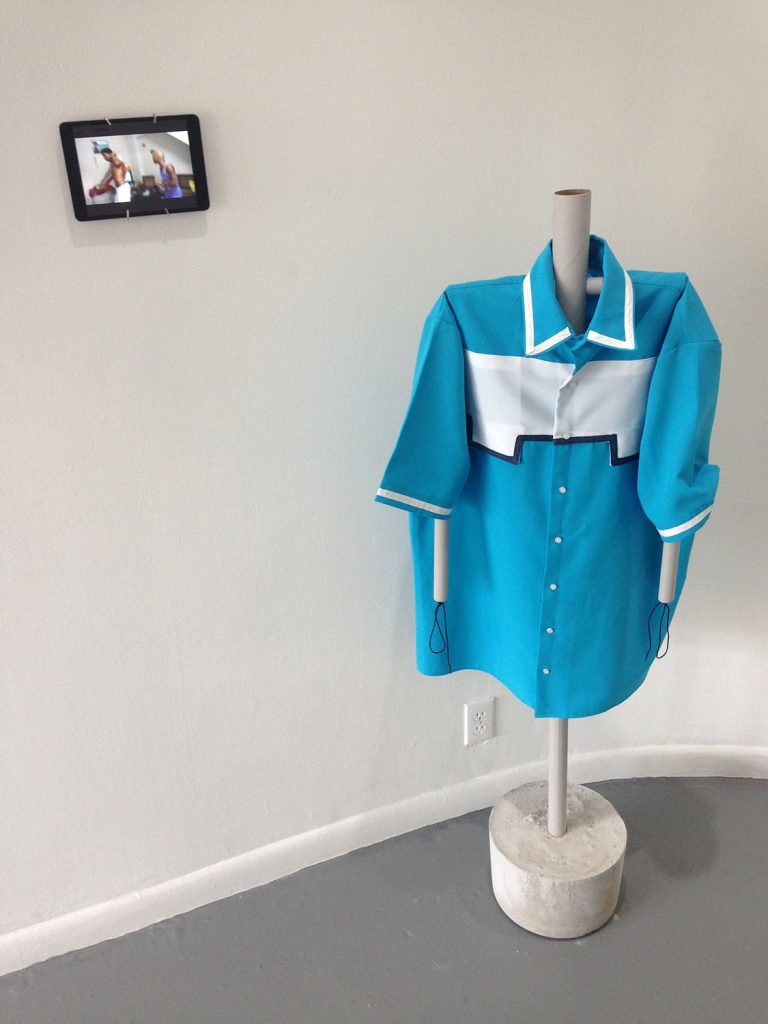
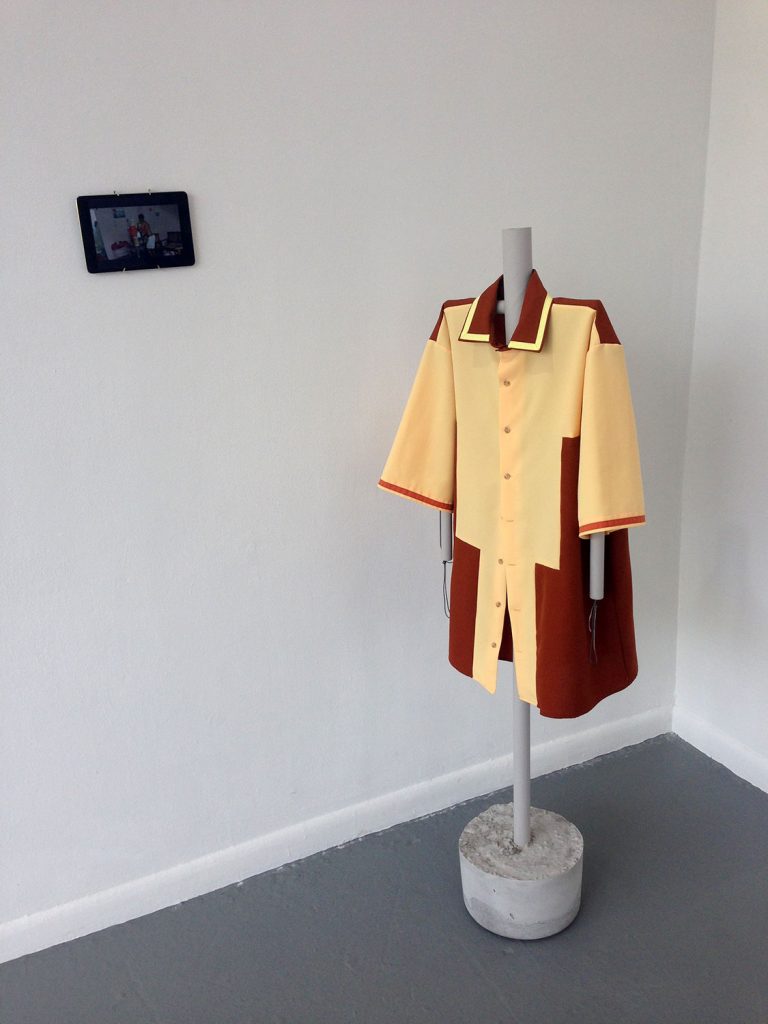
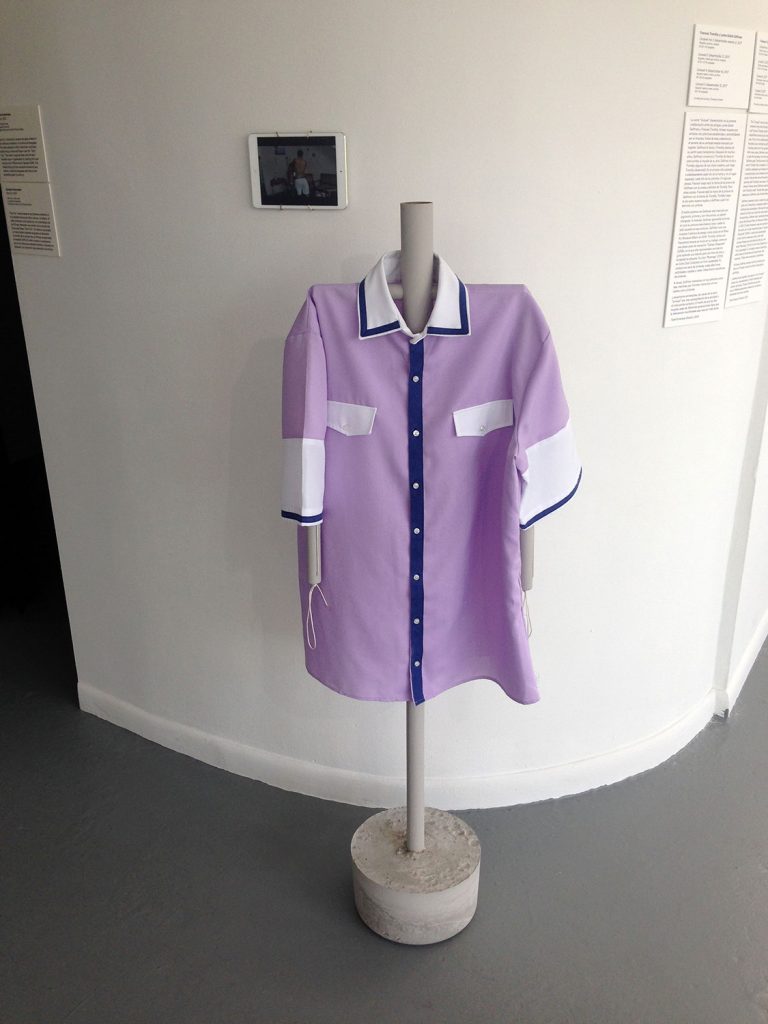
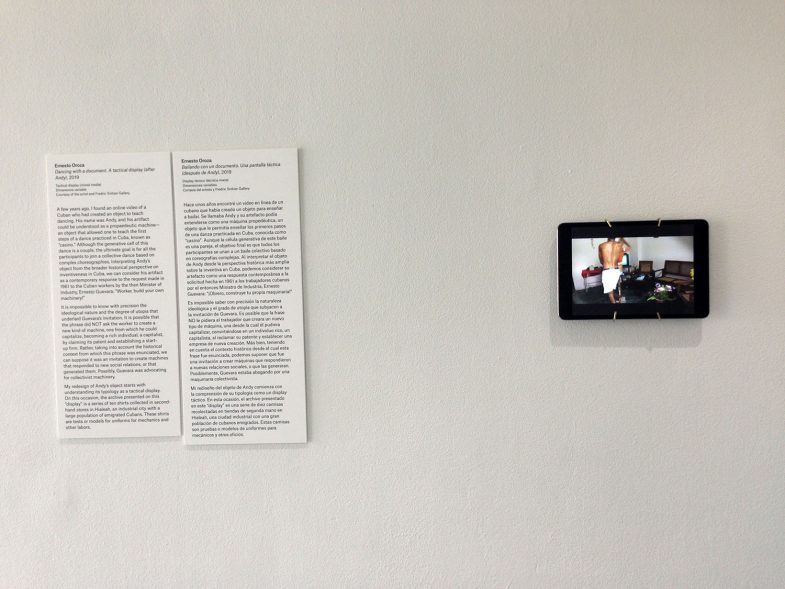
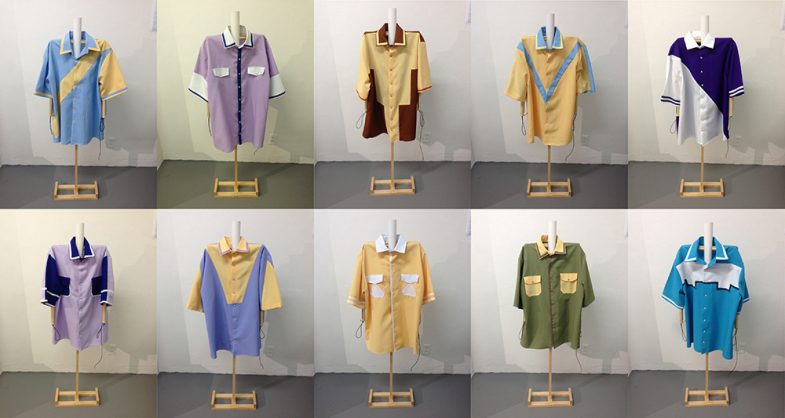
Dancing with a document. A tactical display (after Andy), 2019
see other iterations of the project: 2015, 2017, 2019
